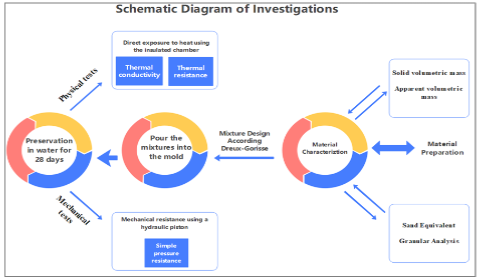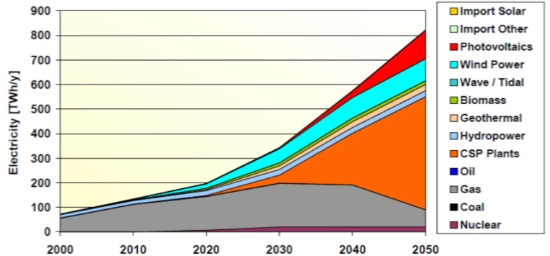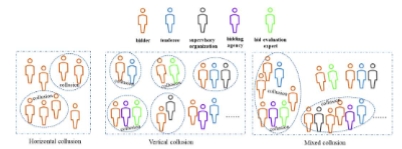Net zero energy analysis and energy conversion of sustainable residential building in Muscat, Oman
Abstract
The building sector is the predominant consumer of primary energy globally. The building sector accounts for around 40% of global energy production. Net Zero Energy Buildings (NZEBs) are highly suggested by energy experts as an effective option to alleviate the strain on primary energy sources caused by the building sector. The disparity between energy performance predictions provided during the design phase and the actual energy performance of residential buildings is mostly attributed to a limited comprehension of the components that influence energy consumption and the constraints of whole building simulation software. The objective of this research was to perform a comparison analysis of the expected and actual energy consumption of a prototype net-zero energy house built at the University of Technology and Applied Sciences in Muscat. The Hourly Analysis Programme (HAP V4.2) was utilised to forecast the energy consumption of a Net Zero Energy Building (NZEB) at HCT, taking into account the availability of an Energy Recovery Ventilator (ERV) and the absence of an ERV. The newly built house underwent a one-month testing phase to fulfil many duties according to competition regulations. One of the main goals was to generate on-site energy through photovoltaic panels, producing an amount proportional to the energy consumed by the house. Upon comparing the actual energy consumption data with the simulated result, it was noticed that the actual energy demand of the house was around 20% lower than the prediction made by the simulation tool.
References
[1]Kamal MA. Design Concepts and Architectural Interventions. Acta Technica Napocensis: Journal of Civil Engineering & Architecture. 2022; 5(1).
[2]International Energy Agency. Updating building energy codes to ensure the sustainability of our global energy future. Available online: https://www.iea.org/publications/freepublications/publication/PolicyPathwaysModernisingBuildingEnergyCodes.pdf. (accessed on 1 May 2024).
[3]Torcellini P, Pless S, Deru M., et al. An Examination of the Definition of Zero Energy Buildings- A Classification System Based on Renewable Energy Supply Options. U.S. Department of Energy Office of Scientific and Technical Information; 2010. doi: 10.2172/983417
[4]Garde F, Lenoir A, Scognamiglio A, et al. Design of Net Zero Energy Buildings: Feedback from International Projects. Energy Procedia. 2014; 61: 995-998. doi: 10.1016/j.egypro.2014.11.1011. hal-01153038
[5]International Energy Agency. Oman’s electricity and heat production data for the year 2018. Available online: htps://www.iea.org/statistics/statisticssearch/report/?country=Oman&product=electricityandheat (accessed on 1 May 2024).
[6]Baldwin C, Cruickshank CA. An evaluation of solar cooling solutions for residential use in Canada. Journal Energy Procedia. 2022; 30: 495-504. doi: 10.1016/j.egypro.2022.11.059
[7]DOE. Energy-efficient home that produces as much energy as it consumes, known as a Zero Energy Ready Home. Available online: https://energy.gov/eere/buildings/zero-energy-ready-home (accessed on 1 May 2024).
[8]ASHRAE. The American Society of Heating, Refrigerating and Air-Conditioning Engineers. ASHRAE’s Vision 2017 aims to create buildings that achieve net zero energy use. Available online: https://www.ashrae.org/file%20library/doclib/public/20170226_ashraevision2017.pdf (accessed on 1 May 2024).
[9]Federal Centre. The Federal Facilities Environmental Stewardship & Compliance Assistance Centre. Available online: https://www.fedcenter.gov/programs/eo13514. (accessed on 1 May 2024).
[10]Garde F, David M, Lenoir A, Ottenwelter E. Towards Net Zero Energy Buildings in Hot Climates: Part 1, New Tools and Methods. Available online: https://task40.iea-shc.org/Data/Sites/1/publications/DC-TP6-Garde-2011-11.pdf (accessed on 1 May 2024).
[11]EHDC. Rules for the Oman EcoHouse Design Competition. Available online: https://ecohouse.trc.gov.om/ecohouse/about/rules (accessed on 1 May 2024).
[12]EPBD. Available online: http://www.buildup.eu/sites/default/files/content/EPBD2019_31_EN.pdf. (accessed on 1 May 2024).
[13]Mugnier D, Fedrizzi R, Thygesen R, et al. Underground hydrogen storage: a review. Journal Energy Procedia. 2022; 70: 470-473. doi: 10.1016/j.egypro.2022.02.149
[14]A study comparing best practices and energy reduction results of almost zero energy buildings in the APEC region. Available online: https://aimp2.apec.org/sites/PDB/_layouts/APEC/print.aspx?List=4c96f8e1-0610-4a91-98c3-e5ed15907cbb&ID=1661 (accessed on 1 May 2024).
[15]Khin A, Lau K, Salleh E, et al. The study investigates the impact of shading devices and glass configurations on cooling energy reduction in high-rise office buildings located in hot-humid climates, specifically focusing on the case of Malaysia. International Journal of Sustainable Built Environment. 2016; 1: 1-13.
Copyright (c) 2024 Muthuraman Subbiah, Hafiz Zafar Sharif, Sivaraj Murugan, Kumar Ayyappan

This work is licensed under a Creative Commons Attribution 4.0 International License.












